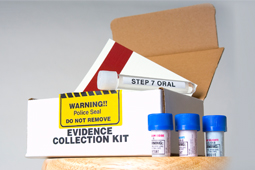
Public crime labs processed 10% more DNA cases in 2011 than in 2009, while demand for such tests grew by 16%, according to a new Justice Department report on the activities at 120 labs across the nation. Because demand grew faster than testing capacity, the backlog of untested crime scene evidence increased during that time.
While demand for testing crime scene evidence grew, demand for offender DNA samples declined by 51% in the same period, according to Making Sense of DNA Backlogs, 2012 – Myths vs. Reality. Offender samples are cheek swabs collected from people arrested for or convicted of a crime. Offender samples are significantly faster and less expensive to test than crime scene samples, which often involve searching for DNA on a variety of clothing and other objects.
The report covers only cases that have been submitted to crime labs by law enforcement agencies. Evidence that has never been sent to labs — the so-called “hidden backlog” — remains a problem in many states; media reports have suggested that there could be as many as 400,000 untested cases.
Get involved in RAINN’s effort to renew the Debbie Smith Act. The act provides critical funding to crime labs to help them reduce backlogs, which will take rapists off the streets and bring justice to victims.